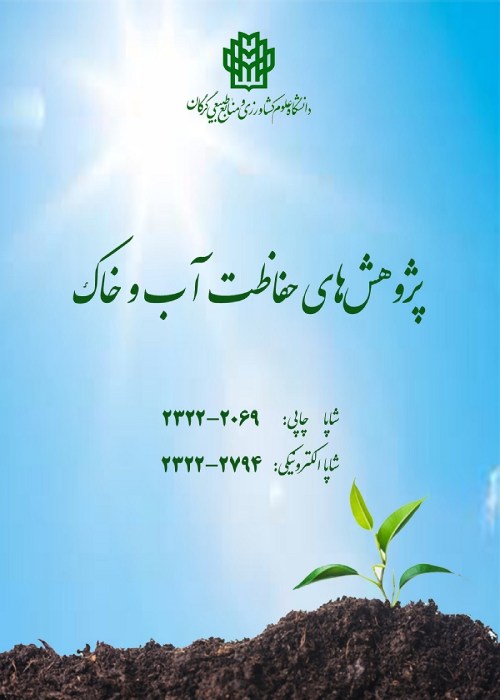Application of Bayesian Network and LS-SVM Methods in Predicting Water Surface Level of Urmia Lake
Author(s):
Article Type:
Research/Original Article (دارای رتبه معتبر)
Abstract:
Background and Objectives
Urmia lake, as an important water ecosystem, is located in the northwest of Iran. Over the past 14 years, the average of Urmia Lake water surface level has decreased to 1272.2 m and it means that the difference between the ecological level of the lake and the present water level is 2-meter. Drying the Urmia Lake will cause serious problems and crises for the watershed, adjacent provinces and the country. In this research, direct and indirect effective parameters in predicting of the lake level such as evaporation, input runoff to the lake, precipitation, temperature, wind, mean air humidity and water level in the previous month have been employed. The comparison of the efficiency of two models namely the Bayesian network, which is a probabilistic model under conditions of uncertainty and the machine algorithm of Least Square Support Vector Machine (LS-SVM) is the main objective of the present research.
Materials and Methods
In the present research, two methods including least squares support vector machine and Bayesian were employed in the modelling process. In this study, effective factors in predicting Urmia lake water level in the previous month as inputs for the used models and water level in the present month as outputs were investigated.The inputs of the models were including
The surface of lake level such as temperature, evaporation, wind, average humidity, precipitation on the lake surface, total input runoff to the lake and the surface of lake water level in the previous month as input of models and surface of level Lake water was studied as the output of the current month. To estimate the temperature, evaporation, wind rainfall and average air humidity on surface lake, five synoptic stations in the adjacent lake data are estimated by evaluating the Thiessen coefficient of each station and the data of 13 hydrometric stations located on the rivers were calculated to lead the lake as input parameters of two model.
Result
The analysis of hydrometric stations data showed that the data of only 4 stations among 13 stations are fitted to the normal distribution. Comparison and investigation of the results of two model by examining the coefficients R2, RMSE, MBE and Nash-Sutcliff indicate superiority of the least squared vector machine model compared to the Bayesian network. These values for the superior model were 92.3%, 0.082, 0.122 and 0.86, respectively.
Conclusion
In this research, the criteria for evaluating and comparing the accuracy of the two model in prediction based on R2, RMSE, MBE and Nash-Sutcliff criteria indicated that the least square vector machine is superior to the Bayesian model. But the important point in comparing the two model is that the nature of the least squares support vector machine is a machine, however, the nature of the Bayesian network is a probabilistic model under uncertainty conditions in which the normal distribution is used to train network variables because the nature of events is random. Therefore, in this research, the use of Bayesian network model is recommended to the least-squares support vector machine model.Keywords:
Language:
Persian
Published:
Water and Soil Conservation, Volume:25 Issue: 3, 2018
Pages:
193 to 207
magiran.com/p1890483
دانلود و مطالعه متن این مقاله با یکی از روشهای زیر امکان پذیر است:
اشتراک شخصی
با عضویت و پرداخت آنلاین حق اشتراک یکساله به مبلغ 1,390,000ريال میتوانید 70 عنوان مطلب دانلود کنید!
اشتراک سازمانی
به کتابخانه دانشگاه یا محل کار خود پیشنهاد کنید تا اشتراک سازمانی این پایگاه را برای دسترسی نامحدود همه کاربران به متن مطالب تهیه نمایند!
توجه!
- حق عضویت دریافتی صرف حمایت از نشریات عضو و نگهداری، تکمیل و توسعه مگیران میشود.
- پرداخت حق اشتراک و دانلود مقالات اجازه بازنشر آن در سایر رسانههای چاپی و دیجیتال را به کاربر نمیدهد.
In order to view content subscription is required
Personal subscription
Subscribe magiran.com for 70 € euros via PayPal and download 70 articles during a year.
Organization subscription
Please contact us to subscribe your university or library for unlimited access!


